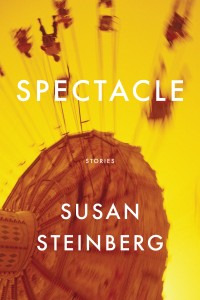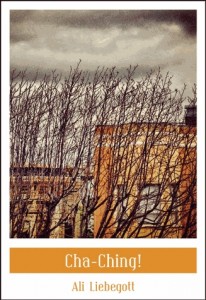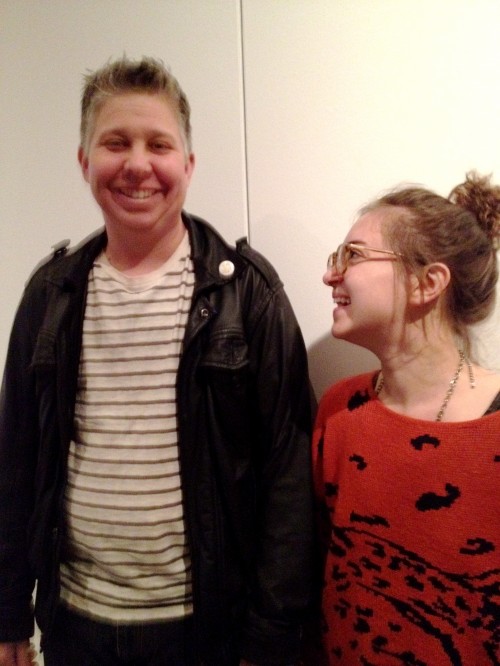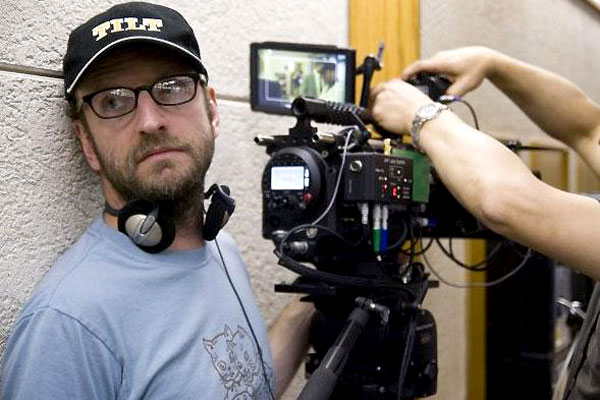
This week I begin teaching a six week summer course on conceptual literature. For those of you who might be interested, click through for the reading list I’ve assigned my students.

This week I begin teaching a six week summer course on conceptual literature. For those of you who might be interested, click through for the reading list I’ve assigned my students.
I’m still bogged down with school (almost done) but I thought I’d throw a little something up, pun intended. Two months ago I wrote an analysis of Susan Sontag’s “Against Interpretation” where I argued that, rather than being opposed to all interpretation, as some believe, Sontag was instead opposed to “metaphorical interpretation”—to critics who interpret artworks metaphorically or allegorically. (“When the artist did X, she really meant Y.”) I thought I’d document a few recent examples of this—not to pick on any particular critics, mind you, but rather to foster some discussion of what this criticism looks like and why critics do it (because critics seem to love doing it).
The first example comes from Chicago’s Museum of Contemporary Art, in particular the exhibit “Destroy the Picture: Painting the Void, 1949–1962” (which is up until 2 June). One of the works on display is Gérard Deschamps’s Tôle irisée de réacteur d’avion (pictured above, image taken from here—I didn’t just stretch out a swath of tinfoil on my apartment floor). The placard next to it reads as follows:
 Red Doc>
Red Doc>
by Anne Carson
Knopf, March 2013
192 pages / $24.95 Buy from Amazon or IndieBound
As a semblance of promotion for her new book, Anne Carson wrote: “Recently I began to wonder what happened to them in later life. Red Doc> continues their adventures in a very different style and with changed names. To live past the end of your myth is a perilous thing.”
Carson made a surprising move releasing a sequel to 1998’s Autobiography of Red, a novel in verse about a boy with wings named Geryon and his love affair with Herakles.
Though sequels are better known in blockbuster films, the constellation of literature has its share of sequels, if not always in predictable forms.
Grace Paley uses her character Faith in multiple books as does Junot Diaz with his narrator, Yunior. Anthony Powell’s A Dance to the Music of Time, a twelve-novel cycle, delivers an interesting take on the sequel—a word whose etymological roots entail sequence, a body of followers, consequence, descendants.
What a formulaic generic choice a sequel could seem for Carson, who considers herself an instructor and translator of Ancient Greek first, and a literary wunderkind (my word) second.
But doesn’t translating ancient works often involve a form of sequencing? There was nothing ancient about the Herakles (Hercules) myths when first recounted. To translate requires fidelity to the original language and intent, while sometimes taking license to contemporize and update the story.
In Red Doc>, Geryon is no longer a boy. He still likes photographs. He is still homosexual. He still has wings.
G, as he’s now called, is a military veteran. And whereas Geryon traveled to South America, G drives northward into an icy expanse with a fellow vet named Sad, a reconfigured Herakles.
Their car breaks down and they find themselves at the mouth of a cave. G’s wings are itching something fierce. “Stiffened/wing muscles pull hard/against their roots and/move into a lift,” Carson writes of her protagonist.
 Susan Steinberg’s new fiction collection, SPECTACLE (Graywolf), is a series of linked and formally-inventive short stories told by female narrators who are dealing with catastrophic as well as domestic tragedies.
Susan Steinberg’s new fiction collection, SPECTACLE (Graywolf), is a series of linked and formally-inventive short stories told by female narrators who are dealing with catastrophic as well as domestic tragedies.
The narrators of a seemingly singular history convey the stories, but are not (Steinberg says) the same narrator—or at least they weren’t written, if I understand Steinberg, as a continuous narrator. So, in this book the same events in two stories can be changed depending on which unnamed narrator—of roughly the same age, build, hair color, and city of origin as Steinberg—is narrating the SPECTACLE. This structure creates a narrative that overlaps, readdresses, carries over pain and learned approaches, and anxiety—the consummate whole getting higher in fever pitch until disaster and ultimately catharsis are reached.
SPECTACLE is an apt title—because the events of the world, the spectacles, and conflicts make narrators who are strong and clever and aware, unable to escape the pressures that build around them and at times the pressures that fall from above. Steinberg’s narrators are powerful, seductive, wounded, and aware of their roles, their performance of gender, identity, and “self.” They are tough.
SPECTACLE has been praised by the New Yorker, nominated for the year’s O’Connor Prize, and reviewed at Bookslut, Publishers Weekly (starred review), SF Chronicle, and at no shortage of other places where “experimental fiction” is most often passed over, proscribed, verboten!
Why is this book getting unvarying attention? Of course it is many things, none so much I might suggest as important as voice—replete with sex, confession, revelation, and genuine risk.
While Steinberg is not telling the factual truth in these stories, she is doing something crafted with such risqué confession that readers take her stories as factual (I admit I did. Even though I knew “better.” Even though she was my first writing teacher and taught me that fiction is fiction). Readers conflate Steinberg with her narrator(s)—and reading this book you see instantly that this is a position of danger for any writer. Because maybe you can’t make this crazy up. Because there’s risk in really talking about one’s gender. Because it isn’t crazy; it’s genius. It’s truth. These speakers are so solipsistic they lose identity, become universal in their extreme isolation and anxiety—they retain awareness and becoming weaponized in awareness of gender.
This collection can be read as an experimental novel composed of many fictions forming an aggregate and rupturing whole. Here is one you cannot look away from, which implicates the minds and bodies of the readers, which reveals what has remained taboo far too long. These stories are not political, not ideological—they are honest in such a way as to make them threatening and unnerving and difficult to talk about.
LBG: Do you mind if we start with something simple, from right off the cover of your book?
S.M.S: I don’t mind.
LBG: Okay. On the back of the book is this synopsis: “SPECTACLE bears witness to alarming and strange incidents: carnival rides and plane crashes, affairs…and amateur porn, vandalism and petty theft. In these stories, wounded women stand at the edge of disaster and risk it all to speak their sharpest secrets.”
LGB: Is this how you see the book? Is that what the book bears witness to—to strange incidents and wounded women at the edge of disaster? Speaking their sharpest secrets?
S.M.S: The book does contain these specific things: affairs, amateur porn, vandalism, planes crashes, and theft. The book also contains the abstractions you mention: secrets and disaster. But had I written the copy, it likely would have mentioned more technical aspects of the book: semi-colons, fragments, one-sentence paragraphs. I tend to think more about the “how” than the “what” when asked what my work is about. But it’s the back of a book. I think readers want the what.
But I don’t think the incidents I write are strange. Do you?
 Cha-Ching!
Cha-Ching!
by Ali Liebegott
City Lights / Sister Spit, 2013
252 pages / $15.95 Buy from City Lights or Amazon
I was furious with Ali Liebegott for writing a novel. We’d lost another poet to the tyranny of fiction. But really, we gained Ali’s careful witness to luck, desperation, and desire, now turned to the queer project of making a world.
Gaines and losses are perhaps apt metaphors for Cha-Ching!, Liebegott’s latest work, in which gambling figures as a central theme. But for Theo, its main character, gambling is about more than fortunes. Gambling is a currency of hope.
Fuck reviewers citing “universal” concerns that appeal to “general” audiences. This character is a self-made, self-secure “sirma’amsir,” and an appealing one. Always on the brink. Of going broke, of drinking again, of saying the wrong thing to the right lover.
Cha-Ching! is an addiction story without recourse to self-help and redemption. It’s a romance built not from exchanging vows, but traumas, drugs, and fluids. You had me at the puke on my sheets. The characters are always making something out of nothing—a dime into a jackpot, a shitty apartment into a home, a blank sky into a declaration of love. It’s gruesome. It’s hilarious. It’d make a puppet out of the hardest of hearts.

I caught Liebegott in the middle of her Sister Spit tour to ask her about her many obsessions. When her tourmates weren’t asking her for keys to the van she was driving, this is what happened:
TJR: If you had the choice to make out with Dostoyevsky or Van Gogh, who would you pick?
AL: I think Van Gogh, but that might be ageist, because I think I’ve only ever seen portraits of Dostoyevsky as a balding man. Van Gogh had really bed teeth, right? I think Van Gogh, although they both seem like terrible problematic relationships, so either would do. It’s tough. But probably Van Gogh.

Film director Steven Soderbergh recently spoke at the 56th annual San Francisco International Film Festival. Before the speech Soderbergh said he would “drop some grenades.” Rarely does that happen. But what Soderbergh did was special – he pierced holes into an industry that is corporatizing and mainstreaming a once beautiful and individualistic art form.
I’m not a student of film nor would I consider myself knowledgeable on the industry. So after I read the full transcript of Soderbergh’s speech I wondered why I was so captivated. The answer was simple: I was reading a speech about the state of film, but as a writer, I was reading a speech about the state of publishing.
Soderbergh’s main sticking points: a bigger film budget yields bigger results, those in charge at the studios don’t watch cinema, artists need to be supported financially long term, ambiguity is toxic to a mainstream audience, and too much emphasis is placed on testing and pre-sales numbers, may sound like sour grapes to some, but I believe he’s accurate. I believe what he says about the state of cinema is in direct correlation to how I, and many, feel about the state of publishing.
Soderbergh loves strangeness and ambiguity in film. The ambiguity in my second novel, published by Penguin, was questioned by my editor. The push to extend the “reality storyline” in the book became a main focus during revisions. There had to be more of a love story. Things had to make sense. Sentences deemed strange and vague were questioned with “I really like this, but what does it mean?” The push for things to “make sense” has resulted in boring movies and boring books. READ MORE >
A couple of days ago Baby Adolf, the first Bambi Muse baby despot, and I met up at a McDonald’s near a Germanic bakery located somewhere on the Upper East Side.
My outfit featured, among other things, sunnies. As for Baby Adolf, his deck was brown.
Both Baby Adolf and I ordered vanilla ice cream cones. And after we ordered second vanilla ice cream cones, Baby Adolf screamed (unlike PhD’s, &c, no one at Bambi Muse is captivated by “conversation”) about how he wanted to be on HTML Giant quite badly. After all, Baby George III has been and so has Baby Marie-Antoinette. Why should the boy who will one day kill six million you-know-whos and five million other oh-who-cares be denied the chance to appear on the site run by the continually cute-looking Blake Butler?
“Maybe,” I said to Baby Adolf, at the McDonald’s near the Germanic bakery on the Upper East Side, “if you gave me three Baby Ruths, four Jujubes, and a Coca-Cola then I’ll publish your summary of the 5th-annual CUNY chapbook festival on 9 May 2013.”
Baby Adolf grumbled his assent. What follows is Baby Adolf’s summary:
***
On Saturday Baby Adolf, accompanied by his mommy, Klara Hitler, visited the 5th annual chapbook festival at CUNY. For some time, Baby Adolf believed CUNY was just another way to say NYU. After Saturday, though, Baby Adolf realized that they were two separate entities. NYU is a big ugly college that’s usurping the West Village, while CUNY is a big ugly building in Midtown.
The festival took place in a plain white hallway, and, according to Baby Adolf’s eyes, there wasn’t anything particular festive going on. There weren’t any military marches or bellicose speeches prophesying global war along with the resurrection of the fatherland. Unfortunately, there were too many boys who looked like they’d just blown in from Bedford as well as a fair amount of girls whose clothes suggested that they had just come here from their weekly Park Slope Lesbian Separatist meeting.
But some commendable creatures were present, like Baby Ji Yoon. She spent most of her time at the festival taking mysterious notes, as if she were spying for a certain country that starts with North and ends in Korea.
 what purpose did i serve in your life
what purpose did i serve in your life
by Marie Calloway
Tyrant Books, 2013
200 pages / $19.00 buy from Amazon or SPD
1. The film The Hurt Locker opens with the quote “The rush of battle is a potent and often lethal addiction, for war is a drug.”
2. Marie Calloway’s novel what purpose did i serve in your life opens with the quote “We teach children not to go into stranger’s houses, so why do it as an adult?”
3. The film The Hurt Locker is divided into a number of distinct scenes showcasing Sergeant First Class William James’ deactivating various bombs in intense, maverick ways. The viewer is left with the post-suspense of the diffusal, the slowing of blood-pressure lets one reflect on war as the hazmat is removed.
4. Marie Calloway’s what purpose did i serve in your life is divided into a number of distinct reflections each culminating in some kind of sex which she somehow coordinates in an often intense, maverick-y way. When being degraded, she posits that she deserves it. She states she feels relief and confusion in making herself an object.
5. The movie The Hurt Locker portrays James’ fearlessness in the face of danger and ends with his inability to escape the very thing that is destroying him.
6. Marie Calloway’s novel portrays a young woman moving through life after vaguely mentioned past traumas. She is a rape victim and this shapes her sexual actions and reactions. Though often being grossed-out or averse to a range of sexual suggestions (from being eaten-out to force-fed her own vomit) Calloway’s actions are that of a compliant, non-confrontational lover.
7. In 2011, Gawker called Marie ‘just a girl, with a Tumblr’.
8. In the Jeremy Lin chapter of the book, Lin points out:
“If someone says your writing has flaws or is good, that implies they know a concrete goal that your writing has, which can be measured in numbers, and that the number would be higher or lower if you changed your writing in a certain way, I feel, by that seems incredibly hard to measure, even if two different people had agreed upon a purpose for your writing that could be measured, like ‘increases heart rate in reader’ or something. But it can be depressing to never think in terms of ‘good’/’bad’ without defining contexts/goals in each instance.”
9. A staff member of the Paris Review once told William S. Burroughs that sex seems frequently equated with death in his writing. Burroughs responded:
“That is an extension of the idea of sex as a biologic weapon. I feel that sex, like practically every other human manifestation, has been degraded for control purposes, or really for antihuman purposes. This whole Puritanism. How are we ever going to find out anything about sex scientifically, when a priori the subject cannot even be investigated? It can’t even be thought about or written about. That was one of the interesting things about Reich. He was one of the few people who ever tried to investigate sex—sexual phenomena, from a scientific point of view. There’s this prurience and this fear of sex. We know nothing about sex. What is it? Why is it pleasurable? What is pleasure? Relief from tension? Well, possibly.”
10 a. “If you like me, you have to like shyness.”
b. “I’m smart at some things but not with people or at growing up.” READ MORE >